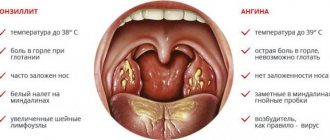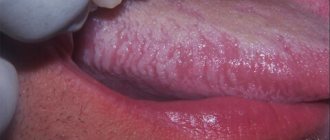Vomit - This is a reflex eruption of the contents of the stomach, and sometimes the duodenum, through the mouth.
The gag reflex is quite complex - it involves various muscle groups. It is controlled by the vomiting center located in the brain stem. By its nature, vomiting is a mechanism by which the body protects itself from poisoning. Normally, vomiting is a reaction to toxic substances entering the gastrointestinal tract or simply something that cannot be digested - for example, too fatty foods. Therefore, after an attack of vomiting, a person often feels relief: the body has been cleansed.
However, the intoxication that caused vomiting may have an internal source, that is, be a consequence of some pathology or disease. It is also possible that the irritation of the nervous system leading to vomiting is not related to the condition of the stomach at all. This makes us perceive vomiting as a very serious, and even ominous, symptom. An attack of vomiting is almost always a sufficient reason to consult a doctor. In case of repeated attacks, you should definitely consult a doctor!
Nausea, vomiting in women (including during pregnancy)
Nausea and vomiting, along with a throbbing headache, depressed mood, increased sweating and numbness of the hands, characterize the cephalgic form of premenstrual syndrome (PMS).
At the same time, blood pressure remains within normal limits. Unpleasant symptoms occur 2-10 days before menstrual bleeding in women with irregular cycles, a history of abortion or depression. Considering that the nervous system in women is more excitable than in men, nausea and vomiting during menstruation can be triggered by any unpleasant odor. Often, prolonged nausea without vomiting in women is a consequence of following a strict diet for a long time. The use of dubious food additives, a lack of essential microelements and vitamins, and the abuse of laxatives leads to chronic stress and disruption of the digestive tract. In addition to this, dysbacteriosis develops. The feeling of nausea goes away only after the intestinal microflora is normalized.
Nausea for no apparent reason is often the first sign of pregnancy. The unpleasant sensation is associated with a sharp increase in the level of the hCG hormone. Further hormonal changes in the female body, changes in metabolism and psychological stress often provoke vomiting 1-2 times a day, more often in the morning. The state of health returns to normal by the 13th week of pregnancy.
Early toxicosis (before 16-18 weeks of pregnancy)
- Mild degree - vomiting up to 5 times a day, the condition of the pregnant woman is satisfactory, the fetus is not in danger.
- Early toxicosis of moderate severity - vomiting up to 10 times a day, weight loss up to 3 kg, rapid pulse (up to 100 beats/min), acetone in the urine.
- Excessive vomiting of pregnancy (grade three) - vomiting up to 25 times a day, weight loss of more than 5%, dehydration and electrolyte imbalance. Immediate medical intervention is required.
Important! Severe vomiting in early pregnancy may indicate a hydatidiform mole.
Regularly occurring nausea and vomiting in late pregnancy makes one suspect the development of preeclampsia, the third stage of late toxicosis (preeclampsia). This condition is preceded by the appearance of swelling of the limbs and face (stage 1), increased a/d and protein in the urine (nephropathy, stage 2 of gestosis). Without timely treatment of preeclampsia, seizures (eclampsia) develop and the risk of stroke is high. For the fetus, late toxicosis is fraught with hypoxia, delayed development and perinatal pathologies. There is a high risk of placental abruption and premature birth.
Important! Nausea and vomiting in a pregnant woman can also be caused by taking iron supplements to treat anemia, common gastroenteritis, or another disease.
Factors influencing adaptation time
The individual characteristics of a person, his psychotype and desire, influence how quickly he can get used to removable dentures.
Other factors include:
- How well the design fits in the mouth. If the restoration does not adhere well to the palate, it causes constant discomfort. It is difficult to get used to such a prosthesis. It shrinks and damages the mucous membranes.
- Is there any pain? It's hard to feel like your artificial jaw is yours when you're constantly in pain.
- Prosthesis design. It is easier to get used to clasp dentures than to plate dentures. It will take longer to get used to the upper denture.
- Quality of manufacture of dentures. The gag reflex will not go away if the distal (back) edge is too long and irritates the palate. A poorly fitted restoration rubs the gums and causes discomfort when chewing. This design needs correction.
Getting used to removable dentures occurs much faster if the denture is not your first. Usually it takes 3-5 days
.
Nausea and vomiting in children
Frequent regurgitation of infants in most cases is caused by gastroesophageal reflux (reflux of food into the esophagus due to incompetence of the lower sphincter). However, this condition has nothing to do with vomiting. A one-time gag reflex against the background of a normal general condition also does not require special attention. Repeated vomiting in a newborn often indicates illness.
- Pyloric stenosis (manifests at 3-12 weeks) - vomiting “fountain” soon after finishing feeding. Unlike systemic diseases, vomiting with pyloric stenosis does not contain bile, and the baby sucks the breast with appetite.
- Intestinal obstruction - occurs due to intestinal atresia, obstruction of the ileum by extremely viscous meconium (meconium ileus), volvulus, or intestinal stenosis. From the first days the baby suffers from vomiting, and the general condition rapidly deteriorates.
- Intussusception (3-36 months) - often caused by viral enteritis and leads to intestinal obstruction. Attacks of severe abdominal colic and vomiting every 15-20 minutes lead to ischemia of the intestinal area, gangrene and perforation.
Nausea and vomiting in a child can be caused by unusual foods, nervous stress and various odors.
The main causes of vomiting in older children:
- viral/bacterial gastroenteritis - often occurs with diarrhea and fever;
- influenza, acute respiratory infections, childhood infections (for example, scarlet fever) - against the background of a high temperature, the child often develops vomiting and convulsions are possible;
- helminthic infestation - the child complains of nausea without vomiting, the parents note that the child has bad breath, rumbling in the stomach, itching in the anus and grinding of teeth at night;
- errors in nutrition - too fatty, spicy or fried foods provoke nausea, diarrhea and sometimes vomiting without fever;
- appendicitis - pain can begin in the stomach, near the navel or lower in the right side, the child becomes lethargic and drowsy, any painkillers for abdominal pain are strictly prohibited;
- poisoning with drugs and household chemicals - often causes an extremely serious condition, the symptoms depend on the toxic substance;
- sunstroke (heatstroke) - when overheated, the body temperature rises to 40ºC, the skin turns red and sweats significantly, nausea/vomiting and headache occur, breathing and heart rate increase;
- taking antibiotics almost always provokes intestinal dysbiosis (feeling of nausea after eating without vomiting, loss of appetite, constipation/diarrhea). To maintain intestinal microflora, antibacterial courses are combined with the intake of probiotics.
Causes of vomiting
In most cases, vomiting is caused by irritation of the stomach receptors or, in medical terms, has a visceral
origin. The cause is most often acute or chronic diseases of the stomach itself (acute food poisoning, gastritis, stomach ulcers, food allergies). Also, stomach receptors can react to diseases of other organs - the gallbladder, uterus, heart (vomiting is part of the complex of possible symptoms of myocardial infarction).
Vomiting may also be central
origin, that is, caused by pathologies of the central nervous system (brain), such as meningitis, encephalitis, trauma and brain tumors. Vomiting is quite common during migraines. Inner ear problems can also lead to vomiting (in this case, vomiting may occur along with dizziness). If the receptors of the inner ear are excessively irritated (with motion sickness), even a healthy person can vomit, especially if the vestibular apparatus is not trained. Sometimes vomiting is caused by emotional distress (stress) or is a reaction to something that causes extreme disgust (conditioned vomiting).
Irritation of the vomiting center can be caused by toxic substances carried by the bloodstream ( hematogenous-toxic
vomit). Toxic substances can enter the body from the outside (for example, chlorine or carbon monoxide through inhalation), or they can be produced in the body itself as a result of impaired liver or kidney function.
Nausea and vomiting with coronavirus
Severe complications and high mortality with COVID-19 force us to more carefully study the first symptoms of the disease. The difficulty lies in the fact that the virus rapidly mutates, and the clinical manifestations of the disease also change. In 2021, typical symptoms of coronavirus infection were fever, loss of smell and taste, muscle pain, and only then a cough. Only some patients experienced nausea and vomiting a little later. In 2021, the majority of cases are caused by the Indian strain of COVID-19, which is characterized by higher infectiousness and a “stomach” syndrome. Against the background of fever and catarrhal symptoms (runny nose, sore throat, cough), every third patient with coronavirus experiences nausea/vomiting and pain in the stomach. A little later, diarrhea and hearing problems appear, and the sense of smell disappears less often.
The "Delta" strain most often affects young people and children. And previously worked out treatment regimens give a noticeably less effect. This is why vaccination of the population, including those who have previously had coronavirus, is so important. Although a two-time vaccination does not completely eliminate infection, it will help avoid severe disease, complications and death. Among the sick, the percentage of vaccinated people does not exceed 1%.
Important! Nausea after vaccination against coronavirus occurs in every tenth vaccinated person. Vomiting is a rare side effect. All unpleasant consequences of the vaccine disappear within 3 days.
Why do you need a blowjob?i
Indeed, nature provides a completely different place for sex, and everything that goes beyond it is a perversion. In this case, we must also take into account that nature invented sex and made it so pleasant so that the reproductive instinct could somehow be realized.
However, a person is designed in such a way that he wants to have fun without any serious consequences. Therefore, they came up with contraception and ways to protect against sexually transmitted diseases. This means sex is no longer as natural as some people think. Therefore, you should not neglect other ways of getting pleasure.
In addition, all men like oral sex. And if you want to please not only your partner, but also yourself, it’s better to master the blowjob technique perfectly.
Specific features of nausea and vomiting
To identify the cause of poor health and assess the patient's condition, the duration of nausea and vomiting is important. Acute vomiting (1-2 days) is often caused by medications, infections, poisoning (such as alcohol), kidney damage, and diabetes. Chronic vomiting (more than 1 week) is characteristic of long-term gastrointestinal diseases and mental disorders.
Features of vomiting and nausea
- Vomiting immediately after eating is characteristic of stomach lesions. If the gag reflex occurs 2-3 hours after eating, pathology of the duodenum is possible.
- Nausea and vomiting of acid are observed with gastritis with increased secretion and stomach ulcers.
- Vomiting of bile (greenish-yellow color) is caused by pathology of the hepatobiliary system (liver, gallbladder) or pancreas.
- Bloody vomit (red or brown) indicates gastrointestinal bleeding.
- Vomiting mucus is characteristic of diseases of the respiratory system (smoker's bronchitis), which occurs with a debilitating cough. Patients with alcoholism often complain of foamy vomiting in the morning (on an empty stomach).
- Vomiting with fever indicates the infectious nature of the disease. With a viral infection, the temperature can reach 39-40ºС. Nausea, vomiting and temperature up to 37.5-37.8ºС are more typical for bacterial infections.
- Vomiting with diarrhea/constipation without fever suggests an intolerance or allergy to certain nutrients, such as lactose.
- Constant nausea without vomiting and fatigue often occur with hypothyroidism.
- Vomiting and pain in the upper abdomen makes it necessary to exclude myocardial infarction, but is more often associated with gastrointestinal pathology.
- Fecal vomiting (dark vomit with a characteristic smell of feces) occurs with intestinal obstruction, tumors, and gastrointestinal fistulas.
Reduce stress and nervousness
Doctors strongly advise patients with an increased gag reflex to prepare for the appointment, take a soothing infusion or herbal decoction, a sedative tablet (Afobazol, Novopassit) at night and in the morning of the day of administration. It is necessary to distract yourself from negative thoughts, not to imagine how unsuccessful and unpleasant a visit to the dentist will be, and even more so to shame yourself in advance. It is good if the patient first seeks advice from a doctor, talks with him, and tells him about his problem during dental treatment. The sincerity and friendliness of a doctor can greatly reduce a person’s stress and fear of necessary procedures.
When medical attention is needed
Call an ambulance if nausea/vomiting is accompanied by:
- severe or increasing abdominal pain;
- chest pain;
- high temperature;
- neck muscle tension;
- anuria (lack of urine, less than 100 ml per day);
- confusion, unconsciousness;
- dehydration;
- numbness and paralysis of the limbs, asymmetrical smile and speech problems;
- vomiting feces or blood;
- uncontrollable vomiting.
Make an appointment with a doctor at the First Family Clinic of St. Petersburg if:
- in an infant, vomiting does not stop for 12 hours, in a child under 2 years old - 24 hours, in an adult - more than 2 days;
- nausea and vomiting occur at least once a week for 1 month;
- nausea and vomiting are accompanied by weight loss.
How to do deep blowjob correctly
You already know the basics: you need to act in the same way as during training. But you can add a few interesting techniques to spice things up.
Technique 1
Take the penis in your hand at the base, close your lips on the head. Move your mouth from side to side. Remember how you shake your head when you say “no” - it looks the same. Continue, gradually moving the penis towards the throat.
Technique 2
Take the penis into your mouth, holding it with your hand at the base. Make a forward movement so that the penis enters only halfway. Repeat several times. Then sharply lower yourself down, inserting the phallus to the very end. Continue, alternating frictions.
Technique 3
Lower yourself from the head of the penis to its base, making circular movements, as if in a spiral, and come back in the same way.
Diagnostics
Patient examination
- Assessing the degree of dehydration.
- Determination of symptoms of acute surgical pathology.
- Neurological status, assessment of clarity of consciousness.
Recommended tests
- Blood tests (general, biochemistry, thyroid hormones, sugar levels).
- General urine test and pregnancy test.
- Stool analysis (coprogram, worm eggs, culture).
Recommended Research
- Ultrasound of the abdominal cavity and endoscopy.
- X-ray and colonoscopy.
- CT/MRI of the intestine, brain.
How to quickly get used to dentures
Simple recommendations will help you go through all 3 phases of addiction much faster. However, it should be remembered that the main thing is the psychological attitude. It will help you endure discomfort more easily and fight the temptation to remove the prosthesis. Visualizing a new smile, imagining changes in appearance and life, and thinking about what problems a new jaw will solve promote emotional and physical relaxation and accelerated adaptation. This is especially true for the upper jaw, because it is more difficult to get used to a denture with a palate. It takes up a lot of space, blocks the taste buds, and is very disturbing.
The following will help you get used to dentures faster:
- Diet
. In the first days after installation of the restoration, it is better to avoid solid foods. Porridge, puree soups, curds and yoghurts will help you survive the most difficult first days until chewing function is restored. - Slow chewing
. Be sure to involve both sides in the process to evenly distribute the load. - Adhesive preparations
. Creams and gels like Corega (Corega) help to better fix the jaw while the muscular system gets used to the restructuring. - Reduced physical stress
on the jaw. At first, it is better to cut food into pieces and avoid biting. - Conversations and reading aloud
. Diction after dental prosthetics will be restored faster if you talk a lot. The more you train, the faster the phonetic apparatus will adapt to the new state. You can slowly count to 100. Read prose and poetry, gradually increasing the pace. Talk with loved ones.
Dentists' advice: do not remove the structure at night during the adjustment period. This also promotes faster adaptation to dentures.
Treatment
Therapeutic tactics depend on the causative disease, the presence of accompanying symptoms of nausea/vomiting and the general condition of the patient.
- Treat dehydration and electrolyte imbalance with oral medications or IV infusions.
- Antiemetics. In severe cases, the use of 5-HT3 receptor antagonists and corticosteroids is acceptable.
- Causative therapy aimed at eliminating the causative disease.
Self-administration of various tablets for nausea/vomiting is not recommended. Only a doctor, after conducting the necessary research, will determine the cause of poor health and prescribe effective and safe treatment.
How long does it take to get used to dentures?
Dentists distinguish 3 phases of adaptation:
- The first phase is irritation
. And although doctors mean irritation of nerve receptors, the name of the phase perfectly conveys the patient’s condition. Irritation and the desire to pull out a foreign object are the 2 main feelings of the first day. A psychological attitude and any, preferably enjoyable, activity helps to overcome them. - The second phase is partial braking
.
Then comes the reward for patience and perseverance. Restoration still interferes, but not as much. Salivation decreases, nausea goes away. Cheeks and lips are less tense. Chewing function is restored. This phase takes about 5 days
. - The third phase is complete braking
. Diction is normalized, chewing no longer causes discomfort, and there is no sensation of a foreign body. The patient experiences discomfort when the jaw is not in place. Adaptation is complete.
On average, getting used to dentures takes 10-30 days.
.
How to relieve nausea and vomiting at home
- Drink more fluids. The daily intake for adults is 30 ml/kg body weight. It is advisable to use decoctions of chamomile and mint. Drink slowly, in small sips. You should not drink only after bloody vomiting.
- Eat small meals. Food should be warm. Avoid hard, fried, spicy, fatty and sweet foods. But if you experience uncontrollable vomiting, you should refuse to eat.
- If an unconscious patient is vomiting, turn the head to the side to avoid aspiration.
- If you have severe nausea, you should lie down. Open windows for fresh air. Avoid strong odors and other irritants. Do not brush your teeth immediately after eating.
- If you suspect poisoning (vomiting and diarrhea), you can take activated carbon (1 tablet per 10 kg of weight), smecta, phosphalugel or polysorb.
- Measure your blood pressure. If the readings are high, take an antihypertensive drug prescribed by your doctor or call an ambulance.
- For low blood pressure, it is enough to drink a cup of tea or coffee and sniff ammonia.
- For motion sickness, it is permissible to take antihistamines or special medications (for example, Dramamine).
If nausea or vomiting continues for more than 2 days and your general condition is affected, you should consult a doctor. At the First Family Clinic of St. Petersburg, you will undergo all the necessary tests and instrumental studies in order to quickly identify the cause of the disease and prescribe effective treatment.
Literature used in writing
- "Gastroenterology - National Guide" (2008). Authors: Ivashkin V.T., Lapina T.L.
- “Diseases of the digestive system in pregnant women. Gastroenterology" (2011). Author: Eremina E.Yu.
- "Manual of Gastroenterology, Volume 1" (1995). Authors: Komarov F. I., Grebenev A. L.
- “Gastroesophageal reflux disease in children” (2007). Authors: Prokhorova L.I., Davydova A.N.
- “Inflammatory bowel diseases” (a practical guide for doctors, 2012). Author: Sitkin S.
What can a doctor do to reduce the gag reflex?
- Lidocaine. The drug is used for local anesthesia. Lidocaine sprays or gels are usually used.
- Local anesthesia of the palate. This method is used on the upper jaw.
- Conduction anesthesia of the lower jaw. After the administration of the anesthetic, the patient’s cheeks, gums, tongue, and lower lip become numb. Their sensitivity decreases, the doctor is able to carry out therapeutic manipulations normally.
During dental treatment, salivation often increases. Saliva gets onto the root of the tongue, and this increases nausea. To ensure patient comfort, the dentist removes saliva using a saliva ejector. If the reflex is pronounced, you can change the patient’s position and treat him while sitting. This way, less saliva reaches the root of the tongue.
Not only therapeutic procedures, but also diagnostic procedures and impressions before prosthetics or restoration can cause nausea. Here, a lot depends on the methods and equipment used in the clinic.
The 32 Dent clinic uses a new intraoral scanner, Medit 500. It allows you to make a 3D model of your teeth. For the patient, this method offers many advantages compared to traditional impressions:
- Scanning comfort. No powder is needed when using the Medit 500 intraoral scanner. The entire scanning procedure takes place quickly and continuously. The device has a small nozzle, which also reduces the risk that the patient will experience nausea during insertion of a foreign object into the oral cavity.
- High accuracy of results. The Medit 500 intraoral scanner allows you to obtain high-resolution images with minimal error. Thanks to this, the doctor is able to accurately assess the condition of the oral cavity and not carry out additional diagnostic procedures.
- High speed. The image obtained during scanning is immediately displayed on the monitor. In order to obtain a 3D model of the oral cavity, approximately 2 minutes are enough - about a minute for one jaw. Even if the patient has a strong gag reflex, in most cases, attacks of nausea do not occur in such a short period.
- Possibility to interrupt scanning and start it from the desired point. The Medit 500 intraoral scanner is turned on and off with a button. If the patient feels nausea or vomiting. The doctor can take a break and continue the scan from where he left off.
The use of modern intraoral scanners helps our doctors make not only treatment, but also diagnostic procedures comfortable.
Nicotine overdose: what is it?
When smoking tobacco, the dangerous alkaloid enters the brain in just 7-8 seconds, since the blood-brain barrier cannot contain it. The incoming nicotine provokes increased production of dopamine, so the person experiences some pleasure.
When large dosages of this substance are consumed, it begins to block the activity of the autonomic ganglia, which leads to general intoxication of the body and the appearance of symptoms similar to general poisoning. With frequent abuse of nicotine, this substance penetrates into all cells and organs, even entering bone and muscle tissue.










